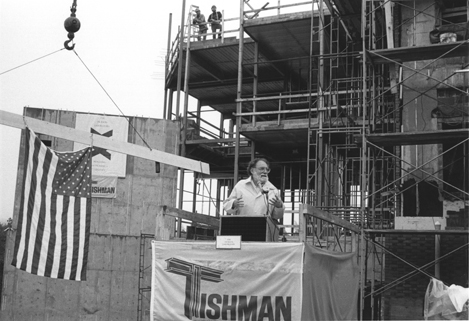
Faculty Research 1990 - 1999
Granulosa cell tumorigenesis in genetically hypogonadal-immunodeficient mice grafted with ovaries from tumor-susceptible donors.
Document Type
Article
Publication Date
1993
Keywords
Crosses-Genetic, Disease-Susceptibility, Female, Granulosa-Cell-Tumor: et, ge, Mice, Mice-SCID: ge, Mutation, Neoplasm-Transplantation, Ovarian-Neoplasms: et, ge, Pilot-Projects, SUPPORT-U-S-GOVT-P-H-S
First Page
3741
Last Page
3746
JAX Source
Cancer Res 1993 Aug 15;53(16):3741-6
Grant
CA54889/CA/NCI, AI30389/AI/NIAID, CA13196/CA/NCI
Abstract
The SWR and SWXJ recombinant inbred strains of mice develop heritable, pubertal onset ovarian granulosa cell (GC) tumors with characteristics similar to those observed for human juvenile GC tumors. We utilized this murine model to determine: (a) whether spontaneous tumorigenesis is an intrinsic property of the susceptible ovary; (b) whether pubertal developmental stage affects tumorigenesis; and (c) whether tumorigenesis depends on extraovarian regulation provided by an immune system or a hypothalamic-pituitary gonadotropin system. To test these questions, ovaries from tumor-susceptible donors were grafted beneath the kidney capsules of hosts with differing immunological and hormonal capabilities. Hosts for these ovarian grafts were: (a) immunologically intact, syngeneic mice; (b) immune-deficient, allogeneic mice homozygous for the severe combined immune deficiency (scid/scid) mutation; and (c) scid/scid mice segregating for the hypogonadal (hpg) mutation, yielding gonadotropin-deficient hpg/hpg scid/scid and gonadotropin replete +/? (hpg/+ or +/+) scid/scid littermates. Donors and hosts of differing ages were used to address questions of developmental effects on tumorigenesis. Grafts were examined 6 to 10 wk after implantation for ovarian morphology and tumor incidence. Results showed that ovary grafts from susceptible female mice formed spontaneous GC tumors equally well in both syngeneic and immune-deficient scid/scid hosts. In each type of host, the incidence of grafts exhibiting spontaneous tumor development declined significantly with increasing age of both donor and host. In addition, prepubertal ovary grafts formed spontaneous tumors in hormonally normal +/? scid/scid but not in hormonally deficient hpg/hpg scid/scid hosts. Finally, treatment of hpg/hpg scid/scid host mice with the androgenic steroid hormone precursor, dehydroepiandrosterone, resulted in GC tumor formation in the tumor-susceptible ovary grafts. We conclude that pubertal onset, spontaneous tumorigenesis in the susceptible ovaries is: (a) independent of an intact immune system; (b) terminated by completion of ovarian maturation as a cyclic organ; (c) not dependent on extraovarian factors unique to the genetically susceptible host; and (d) potentially initiated by androgenic steroids in the absence of an intact hypothalamic-pituitary gonadotropin axis. We hypothesize that ovarian androgens synthesized in response to normal gonadotropin stimulation initiate spontaneous tumorigenesis in the genetically susceptible ovary.
Recommended Citation
Beamer WG,
Shultz KL,
Tennent BJ,
Shultz LD.
Granulosa cell tumorigenesis in genetically hypogonadal-immunodeficient mice grafted with ovaries from tumor-susceptible donors. Cancer Res 1993 Aug 15;53(16):3741-6

